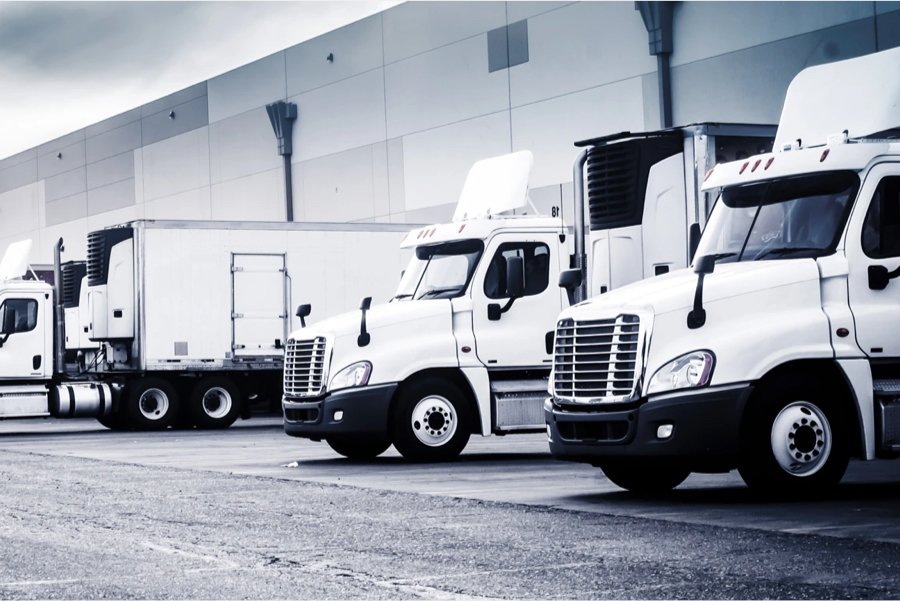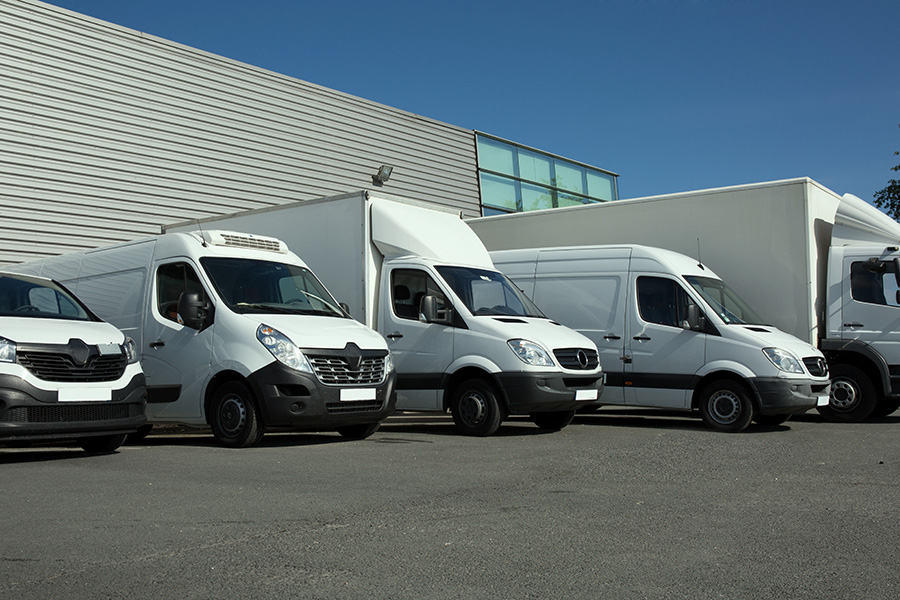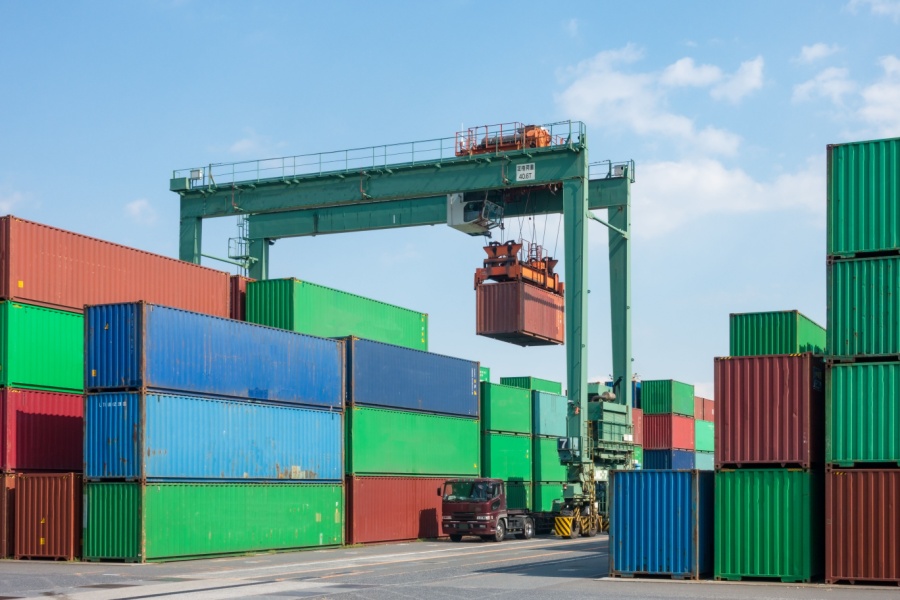It’s hard to beat commercial transport: What is more basic than a truck hauling cargo down the highway toward a loading dock? But while the core competency of fleet operations will always be on-time delivery of goods or services, lately the field has entered new realms of complexity. By leveraging technology and creative partnerships, fleet logistics experts are bringing transparency to the supply chain to create greater efficiency.
The challenges of road transport and haulage include a shortage of professional drivers and new, more complex regulations. Fortunately, the science of vehicle telematics is being used to uncover and eliminate virtually all forms of waste, redundancy and underutilized capacity. The system of sensors, transmitters, software and smart devices that comprises fleet telematics, while a major source of value, also prompts increased vigilance about data security.
“Currently, for a solutions provider, you need to be right in the middle of what’s changing,” says Gary Allen, Vice President of Supply Chain Excellence at Ryder. “You’re making the business case for a given technology or operating model, and at the same time you have to devise ways of mitigating risk elements—all in a timely manner.”
A History of Cooperation
Sharing resources is not new to this sector. Historically, businesses with goods to move have shared space on ships or in warehouses, thereby saving time and money. More recently this has expanded to include sharing trucks and even drivers as a path to new efficiencies. Now, shared data networks are widely used in the fleet business to increase productivity. In fact, the number of trucks equipped with the vehicle telematics that make sharing so viable is projected to grow from 35 million this year to 51.5 million in 2024.
Allen says the original question around shared networks involved commercializing them fairly. “For Ryder, it was always a clean answer,” he says, “generally based on the percentage of the transport assets used by a particular customer.” He notes that the increasingly blurred lines between competition and cooperation have established a need for “the right firewalls” and other safeguards to protect sensitive information.
As a fully diversified transportation and supply chain solutions company, Ryder has been maximizing the value of transit-related assets since 1933. The company owns some 239,000 trucks, tractors, trailers and vans that it rents or leases. It also has thousands of dedicated-transport customers—businesses for whom Ryder provides trucks, drivers, fleet maintenance, routing, scheduling, management and administrative support.
Ryder also operates in the “purchased” transport space, moving goods on a spot basis. Then there’s the company’s leadership position in supply chain management and third-party logistics, at a time when one-third of companies that outsource fleet logistics are expanding load sharing, according to an independent 2020 report.
An End to Empty Trucks
Empty or even partially filled trucks are anathema to the industry, particularly in light of the current driver shortage, which is only expected to worsen to a projected shortfall of 330,000 drivers by 2024.
Ryder, however, can provide value-added solutions to all dedicated-shipping customers, including an integrated transportation management solution that helps fleets tap into “backhaul” revenue-sharing opportunities with other Ryder customers. This return trip from Point B back to Point A with payload, instead of an empty vehicle, successfully minimizes “empty miles” and thus recoups transportation costs.
“We’re an asset-based provider, but we can balance that with non-asset-based configurations, according to the situation,” explains Allen. “In the old days, people wouldn’t think of doing that, but now we’re deploying an integrated approach that will allow us to optimize across our network.”
Serving customers in virtually every sector of the economy, Ryder engineers offer nuanced solutions according to each industry’s particular needs and patterns. “Oil and gas is a good example of how we can use shared networks to bring efficiency and lower the risk of idle assets,” says Allen. “There you have very defined regions, plus you have compatibility of products and types of vehicles needed to serve the market.”
Another example of the company’s customized service comes from Ryder’s Cold Chain Solutions division, serving shippers that require constant refrigerated conditions, whether for perishable foods or medical products. “Shared networks are more regional in nature, and not as applicable to long-haul transport,” Allen explains. “Food and beverage delivery in cities is a good example, and that turns out to be one of the most significant industry verticals for Ryder.”
So, in this age of wireless networks that enable visibility for monitoring freight loads, empty trucks, maintenance needs and the like, can competitors in a given sector share fleet assets without sharing privileged information?
One Step Ahead of Security Challenges
Ryder’s proprietary visibility platform offers considerable detail, providing data that gives a clear view of a vehicle’s load, location, condition and contents, plus data about regulatory jurisdictions, compliance and more.
From that starting point, the company’s security protections are formidable, beginning with a single sign-on that builds a security layer against unwanted views of logistics data. Since 2011, Ryder has utilized an external data-security review to proactively stay ahead of evolving security challenges. In addition to management of data security, there is a data analytics challenge—and opportunity— built into the future of fleet logistics. As Big Data continues to add visibility to the supply chain, the cargo, the vehicles and the fixed points along the chain, “the analytics and algorithms are a final piece of this evolution, and a crucial one,” states Allen. “‘Where’s my truck’ and ‘where’s my load’ are questions we now answer easily,” he adds. “Questions like, ‘When is the next volcanic eruption in Japan or Iceland, and what will it mean for business?’—that’s the beginning of Big Data for logistics.”
As this technology develops and increasingly provides a competitive edge, there will be few serious players along the supply chain that won’t turn for help to the sources that can best deliver it.
This article first appeared in Bloomberg and is reprinted with permission.




